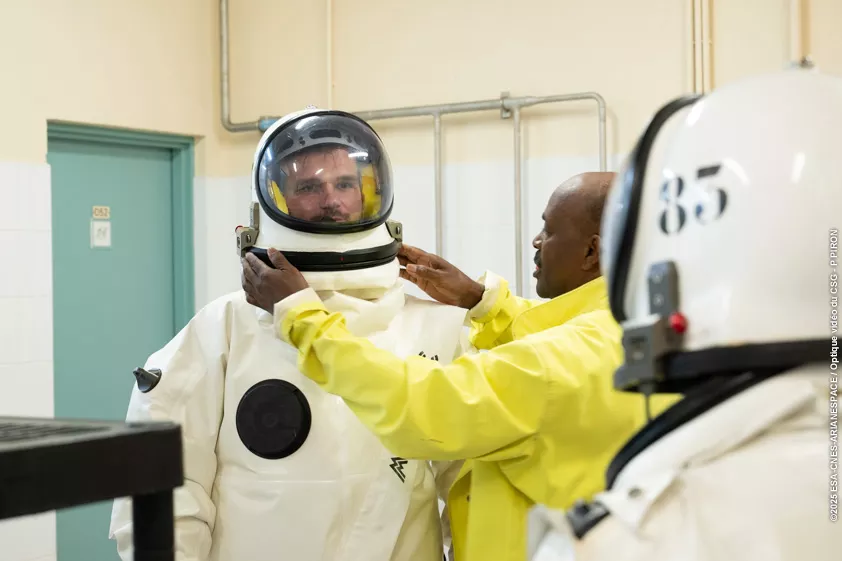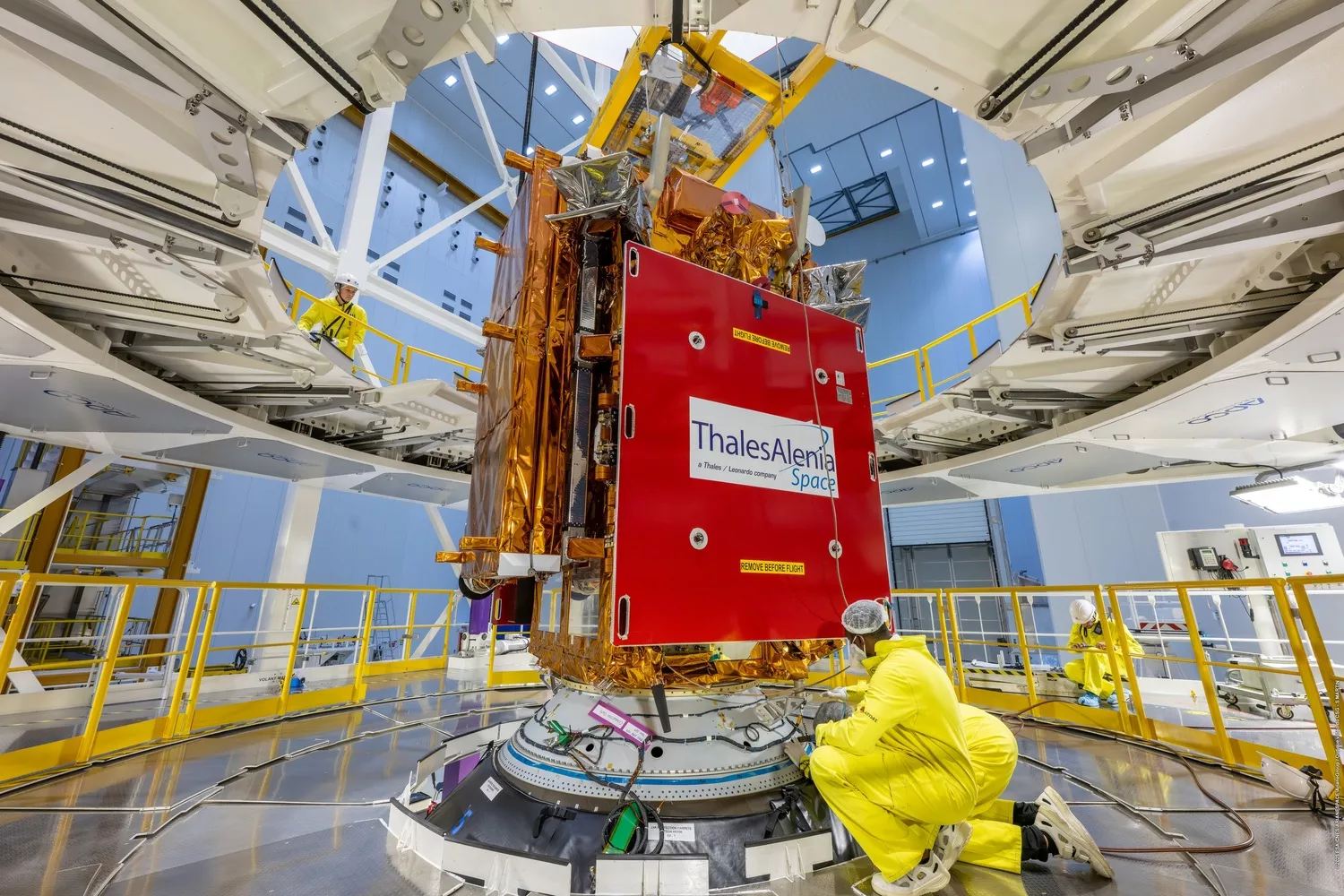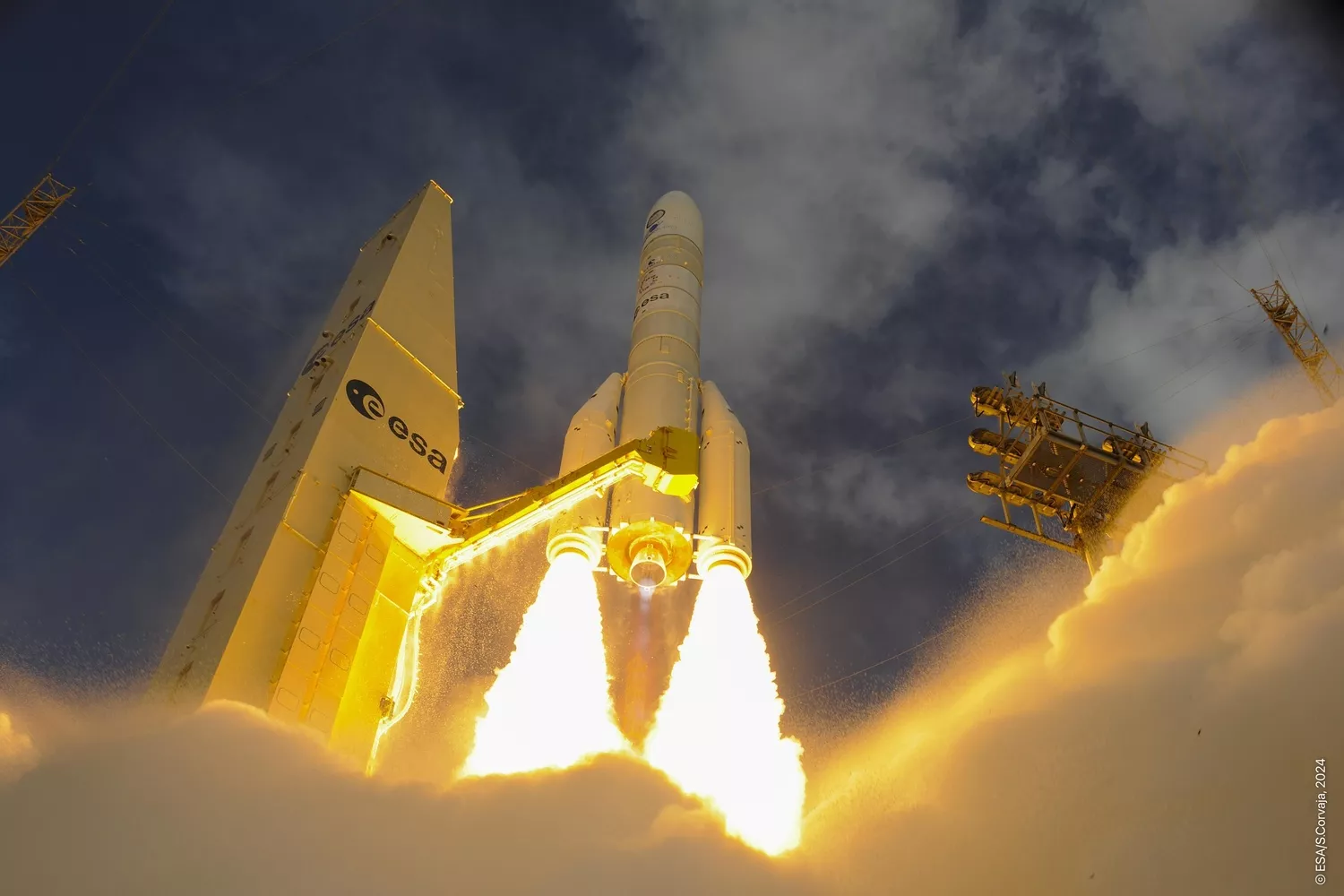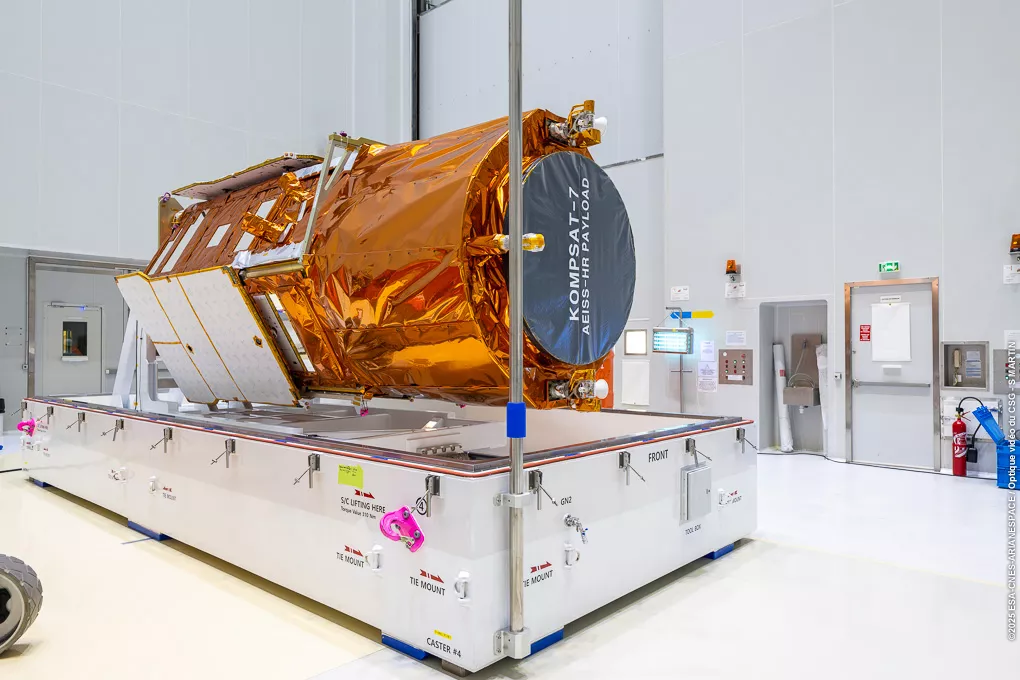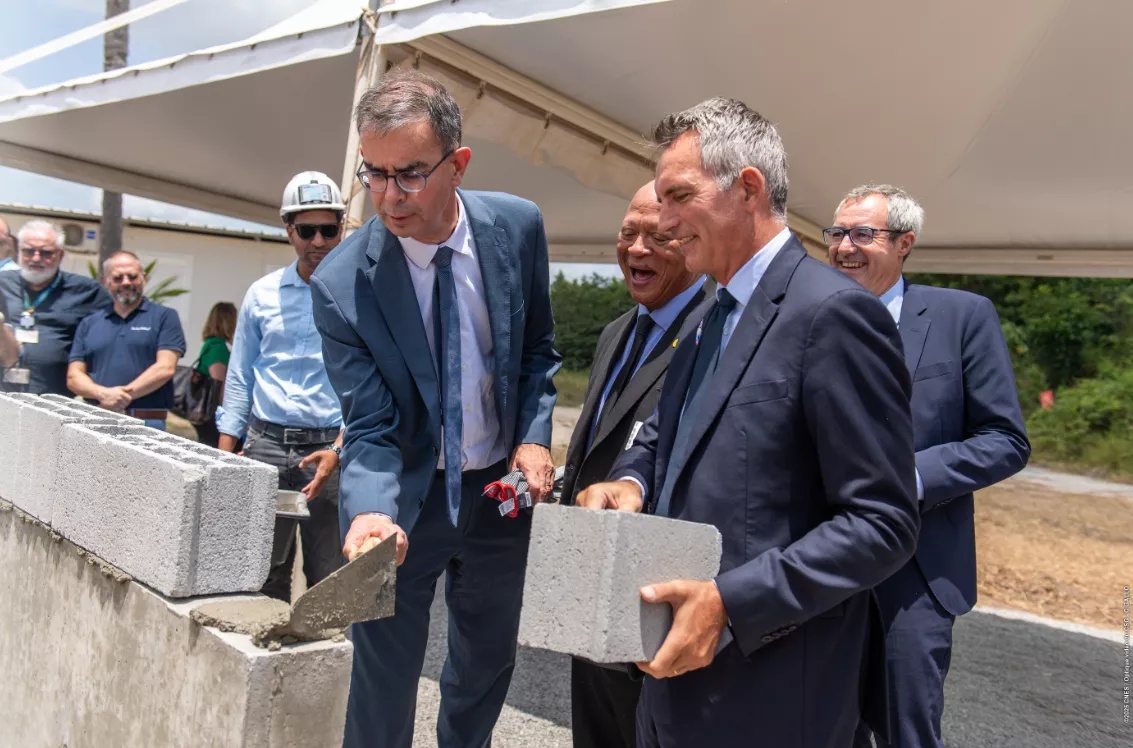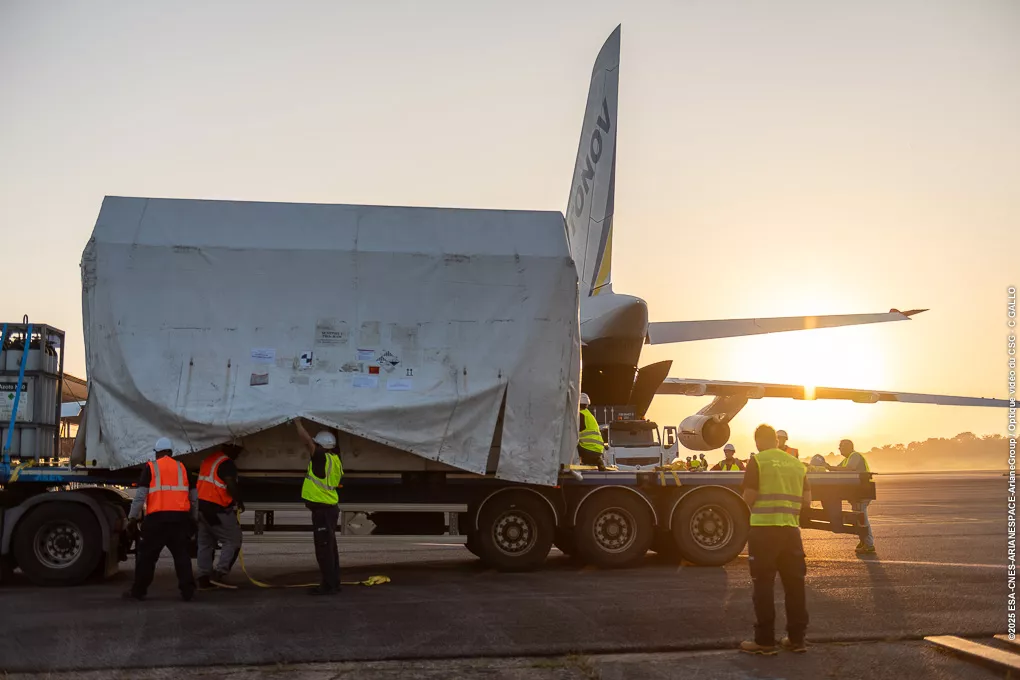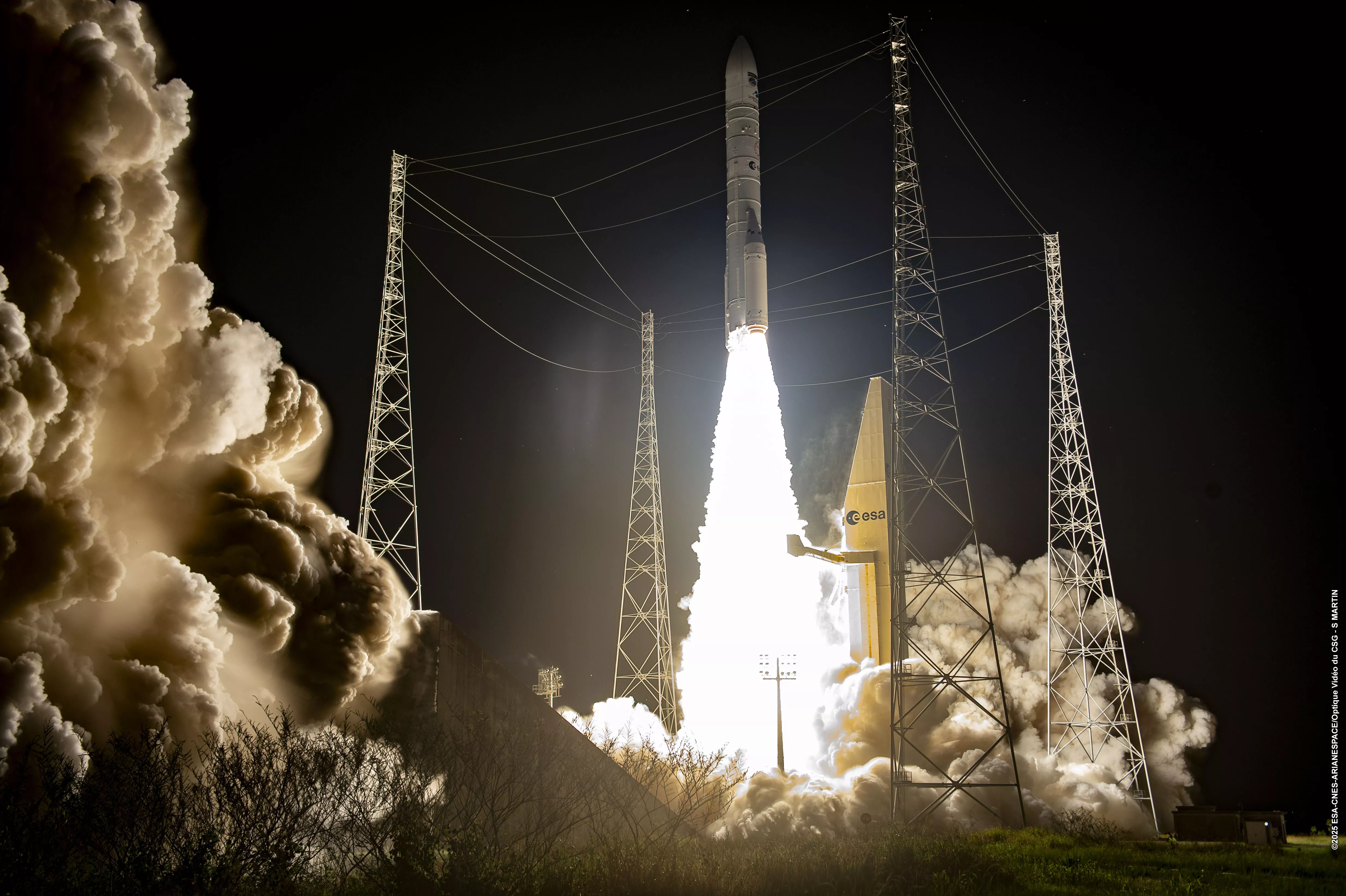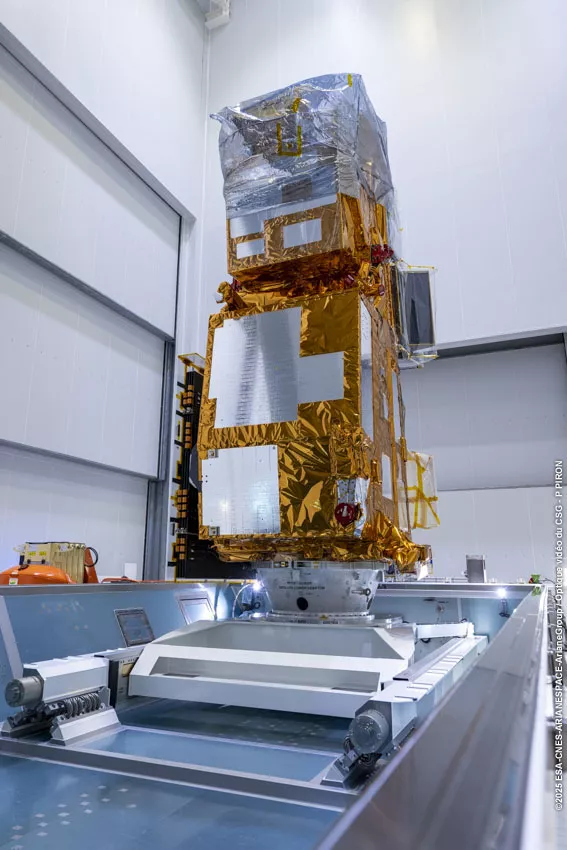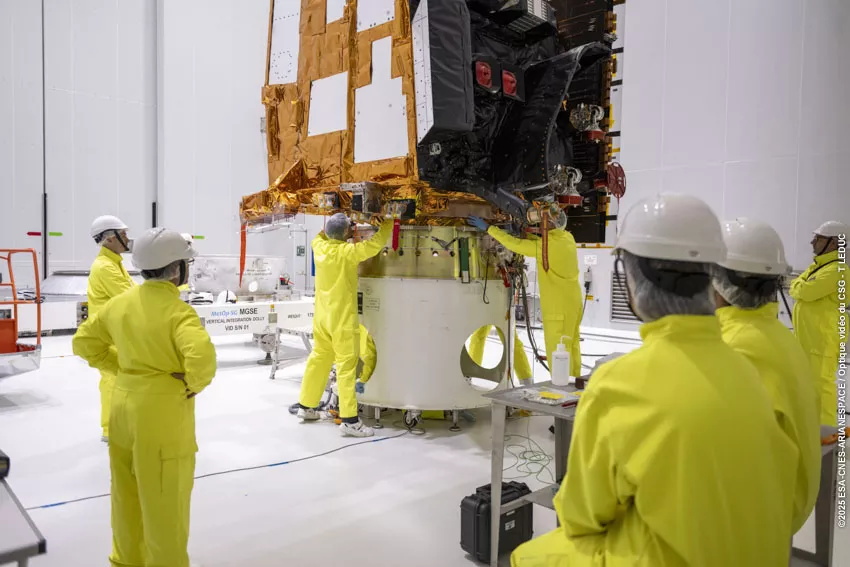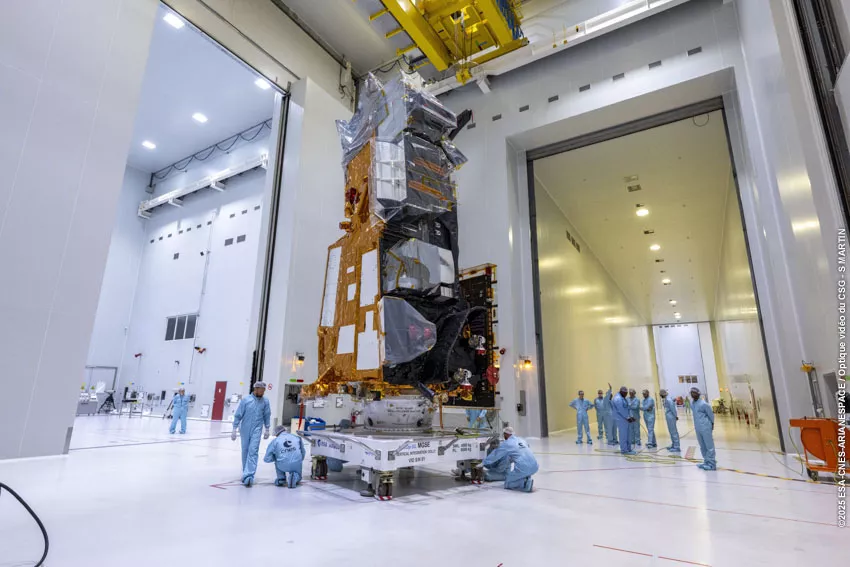VV27 : dans les coulisses de la préparation de MicroCarb et CO3D
À l’approche du lancement VV27 prévu le 25 juillet prochain, les équipes du Centre spatial guyanais ont mis en œuvre tout leur savoir-faire pour accueillir et préparer les satellites MicroCarb et CO3D. Retour sur une campagne exigeante, entre conditions climatiques, azote sec, tests électriques et logistique sur mesure.
Un satellite fragile à manipuler avec précision
MicroCarb, satellite du CNES, est le premier satellite européen dédié à la mesure du dioxyde de carbone (CO₂) dans l’atmosphère. Pour cela, il utilise un spectromètre qui capte la lumière du Soleil réfléchie par la Terre. Son détecteur, au cœur de l’instrument, est extrêmement sensible à la température et à l’humidité.
« En Guyane, il fait en moyenne 27°C. Pour préserver le détecteur, nous avons choisi de transporter MicroCarb vers la zone de lancement en fin de journée, lorsque les températures sont plus basses », explique Philippe Landiech, chef de projet senior MicroCarb au CNES.
À l’ouverture du conteneur en salle blanche, un sachet rempli d’azote a été utilisé pour éviter l’humidité durant le transport. Il a fallu attendre deux heures que le gaz se disperse avant d’intervenir.
Le CSG a fourni de l’azote propre et sec pour alimenter le satellite durant toutes les phases de préparation. Un raccordement d'alimentation en azote a été spécifiquement conçu par les experts techniques fluides des EPCU afin de maintenir les conditions optimales et ainsi protéger le satellite jusqu’à sa mise en coiffe.
Des calculs au millimètre près
Une fois prêt, MicroCarb a été débranché juste avant d’être encapsulé sous la coiffe du lanceur Vega-C. Une course contre la montre a débuté : combien de temps le détecteur pouvait-il rester sans alimentation en azote ?
« On disposait d’une allocation globale de 700 h sans azote depuis la livraison du détecteur jusqu’à l’atteinte de l’orbite et la dernière phase sous coiffe en constitue la majeure partie », précise Philippe Landiech.
Lors de notre entretien du 17 juillet, le satellite en avait déjà consommé 400 heures. Désormais, MicroCarb est en veille passive. Il sera rallumé automatiquement au moment de sa séparation du lanceur, en orbite. Aucun "rouge satellite” n’est attendue au décollage pour ce satellite.
CO3D : une logistique bien huilée pour un satellite électrique
Passagers principaux de la mission VV27 dont ils occupent la plus grande partie de la coiffe, les 4 satellites CO3D ont été développés dans le cadre d’un partenariat Airbus/CNES. Fonctionnant avec une propulsion électrique et non chimique, ils ont été remplis en xénon (leur carburant) dès Toulouse afin de simplifier les activités en campagne de lancement. À leur arrivée en Guyane, seul le chargement des batteries après transport a été réalisé avant l’intégration des satellites sur leur dispenseur, sans besoin de tests fonctionnels poussés.
« CO3D a été conçu pour optimiser son cycle de production : pas de remplissage en Guyane, juste une vérification et gestion fine des batteries et pas besoin de tests de bonne santé sur site. Cela permet de sécuriser la campagne et de gagner en efficacité. », explique Philippe Chéoux Damas, chef de programme CO3D chez Airbus Defence and Space.
Sur le plan logistique, la constellation CO3D a demandé des aménagements spécifiques tels que des plateformes et échelles supplémentaires… sans oublier une vigilance renforcée sur la propreté, avec des témoins de contamination ajoutés par l’équipe projet et le CSG, pour répondre aux besoins d’une mission d’observation optique.
Un adaptateur sur mesure pour une constellation unique
Enfin, pour accueillir les quatre satellites CO3D sur le lanceur Vega-C, un adaptateur de vol spécifique baptisé CLESSIDRA a été conçu sur mesure par Airbus Defense & Space Madrid pour le compte d’Avio, le constructeur italien de la fusée.
« Notre mission, c’est d’adapter les moyens du Centre spatial guyanais aux besoins spécifiques de chaque satellite. Pour MicroCarb et CO3D, cela a demandé de l’adaptabilité pour la préparation des EPCU et une coordination fine entre les équipes, notamment en matière de propreté, de logistique et d’environnement technique.», confirme Emmanuelle Sainte-Rose-Fanchine, responsable des moyens charges utiles au CNES.
Rendez-vous le 25 juillet pour assister au décollage de la mission VV27 !
Le lancement pourra être suivi en direct depuis le site d’observation de Carapa, ou en ligne sur les chaînes YouTube du CNES et d’Arianespace.
Décryptage en images
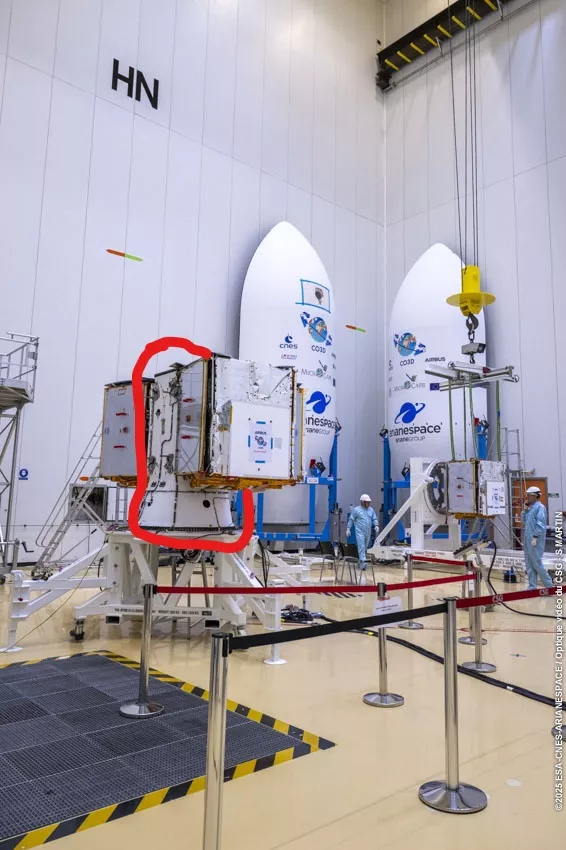
Intégration des satellites CO3D sur le CLESSIDRA (en rouge)
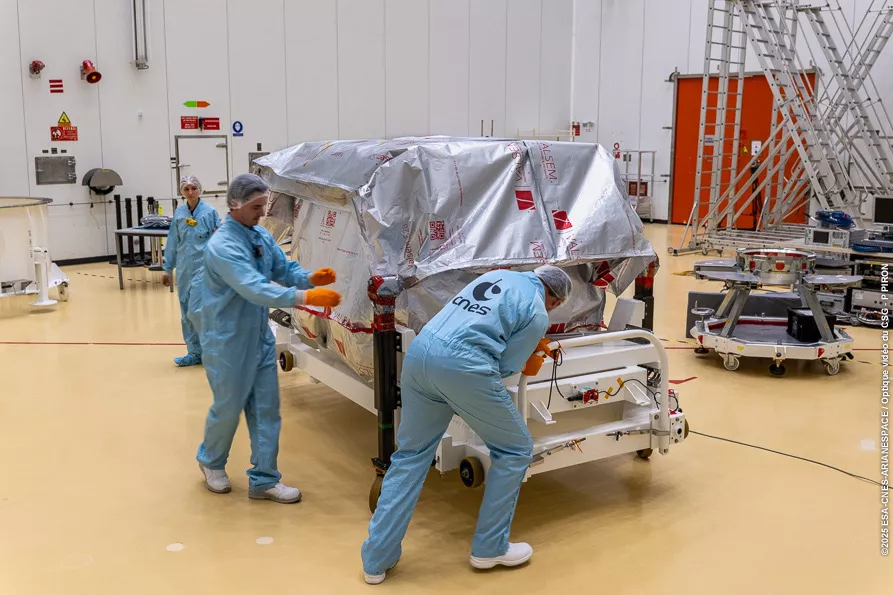
MicroCarb arrive en salle blanche avec son sache (en gris) rempli d'azote
Dans la même rubrique
-
VA265 : de nouvelles images de la préparation
28/10/2025VA265 : tout savoir sur le lancement du 4 novembre
28/10/2025VA265 : comment assister au lancement ?
06/10/2025VV28 : Kompsat-7 se prépare
02/10/2025Première pierre posée pour l’ensemble de lancement multi-lanceurs au CSG
16/09/2025VA265 : Le satellite Sentinel-1D est arrivé en Guyane
11/09/2025
